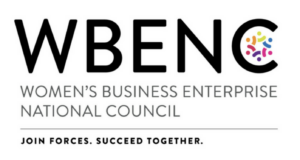
Progressive, traditional, balanced..what do these words mean?
Progressive
The philosophy of progressive education began in the late 19th century and continued throughout the 20th century and it exists today still. It was originally formed on the “idea of progress.” Progressive educators thought that society could be improved by school reform which was reactive to student needs. John Dewey, a pioneer in progressive education, implemented a “hands-on approach to learning.” Dewey published his theory which states what education is (the student is a social being), what the school is (a part of society and should reflect the community), the subject matter of education (develops attitudes toward, interests in, and experience), the nature of method (students should be active), and the school and social progress (schools facilitate a process of students sharing in social consciousness).
Schools in NYC that have elements of progressive education:
- Students are active and the curriculum is interdisciplinary (writing is taught within science)
- Inquiry-based (students start with a problem and use it to frame their learning)
- Whole Child (the school is invested in learning about all aspects of a student’s development)
- Committed to Social Justice (the school invests in diversity, equity and inclusion)
Bank Street School For Children
- Students learn by doing and engage with Masterful Teachers
- Students engage with the community and neighborhood
- There is a celebration of social justice and diversity
- The school invests in facilities and resources to connect students with opportunities to engage in learning
- Using the Dalton Plan, students connect with members of the community in the House. They experience individuality in learning through the Assignment. Teachers meet with students to further their learning in the Lab.
- Students engage with the community and neighborhood
- There is a strong commitment to diversity, equity, and inclusion
- Influenced by progressive educator, Helen Parkhurst.
Traditional
The foundation of traditional education dates back in history to uncharted records. It was founded on a practice of oral recitation: a practice where students would recite what they had learned. The emphasis in traditional education is the development of skills, knowledge, memory, and standards of moral and social conduct. In traditional education, students will engage in direct instruction (a teacher will show the class how to do something that they will then do). Often there is seatwork and drilling of skills. Memory for information is important. There is a single curriculum for all students and often there is tracking (some students take honors classes while others take on grade level classes). There is a formal teacher-student relationship. The teacher typically knows the subject matter well and imparts that knowledge to students. It is important to note that in 2022, most traditional schools have elements of progressive education within them. They will attend to social-emotional development and include some hands-on learning as well.
Schools in NYC that have elements of traditional education:
- Emphasize skill-building in their curriculum
- Teacher-led classes
- A data-driven approach to instruction
- Memorization is emphasized
St. Ignatius Loyola Grammar School
- Teacher-led curriculum
- Skills are assessed often withing standardized and teacher-led testing
- Memorization is important to succeed in the program
- Details such as cursive, spelling, and math fluency are emphasized in student progress
- Teachers are passionate subject experts who bring learning to their students.
- The teaching of tools and skills is a part of this program
- Advanced STEM options are included in the curriculum
- Students spend 7.4 hours per week in chemistry, biology and physics in grades 6-8 and students take 4 AP exams before graduation
Balanced Education
The field of education may not completely agree on a definition of “balanced education.” Generally speaking, a balanced education includes traditional and progressive elements of education. Each school program uses elements of traditional and progressive to their own liking. It is important when you read “balance” that you ask further questions such as, “What does a balanced education mean to your school?”
Schools in NYC that have elements of balanced education:
- Incorporates the arts, athletics and community service within their academic program
- Employ a liberal arts curriculum that has traditional and progressive approaches
- Connected with the community
- Influenced by “classical tradition” (students in upper school still handwrite)
- Uses the IB Curriculum which includes elements of traditional and progressive education (many schools who have IB are using balanced approaches to education)
- Balances student-led and teacher-led lessons
- Committed to developing learners who are balanced
Columbia Grammar and Preparatory School
- Engage children’s minds and support curiosity within their curriculum
- Faculty creates a curriculum that includes skills instruction and critical thinking
- With the additional courses, such as chess, swimming, math teams, student travel, and advanced scientific research, students engage in a variety of student-centered activities that develop their whole selves.


